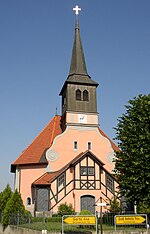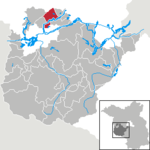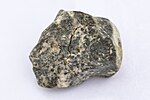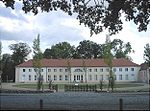Havelland

Geographically, the Havelland is the region around which the River Havel flows in a U-shape between Oranienburg to the northeast and Rhinow to the northwest. The northern boundary of the Havelland is formed by the River Rhin and the Rhin Canal. In the history of Brandenburg, the Havelland represents a historic region. In the heart of the Havelland is the county of the same name. In addition the Havelland includes the south of Ruppin Land with the Rhinluch, the western part of Berlin's Spandau, parts of Potsdam, the town of Brandenburg an der Havel and several villages in the county of Potsdam-Mittelmark. The Tourist Association of Havelland has chosen a rather different boundary. It covers the county of Havelland, the town of Brandenburg an der Havel and the northern part of the county of Potsdam-Mittelmark, including communities south of the Havel river, that belong to the region of Zauche. The writer Theodor Fontane described the Havelland as well as the other landscapes of Brandenburg. In the ballad Herr von Ribbeck auf Ribbeck im Havelland he helped to give this region special prominence and his novel character Effi Briest grew up here. The Havelland was also given its own volume of Fontane's accounts of hiking across Brandenburg, the Wanderungen durch die Mark Brandenburg.
Excerpt from the Wikipedia article Havelland (License: CC BY-SA 3.0, Authors, Images).Havelland
Geographical coordinates (GPS) Address Nearby Places Show on map
Geographical coordinates (GPS)
| Latitude | Longitude |
|---|---|
| N 52.5 ° | E 12.75 ° |
Address
Zachow
Brandenburg, Germany
Open on Google Maps











